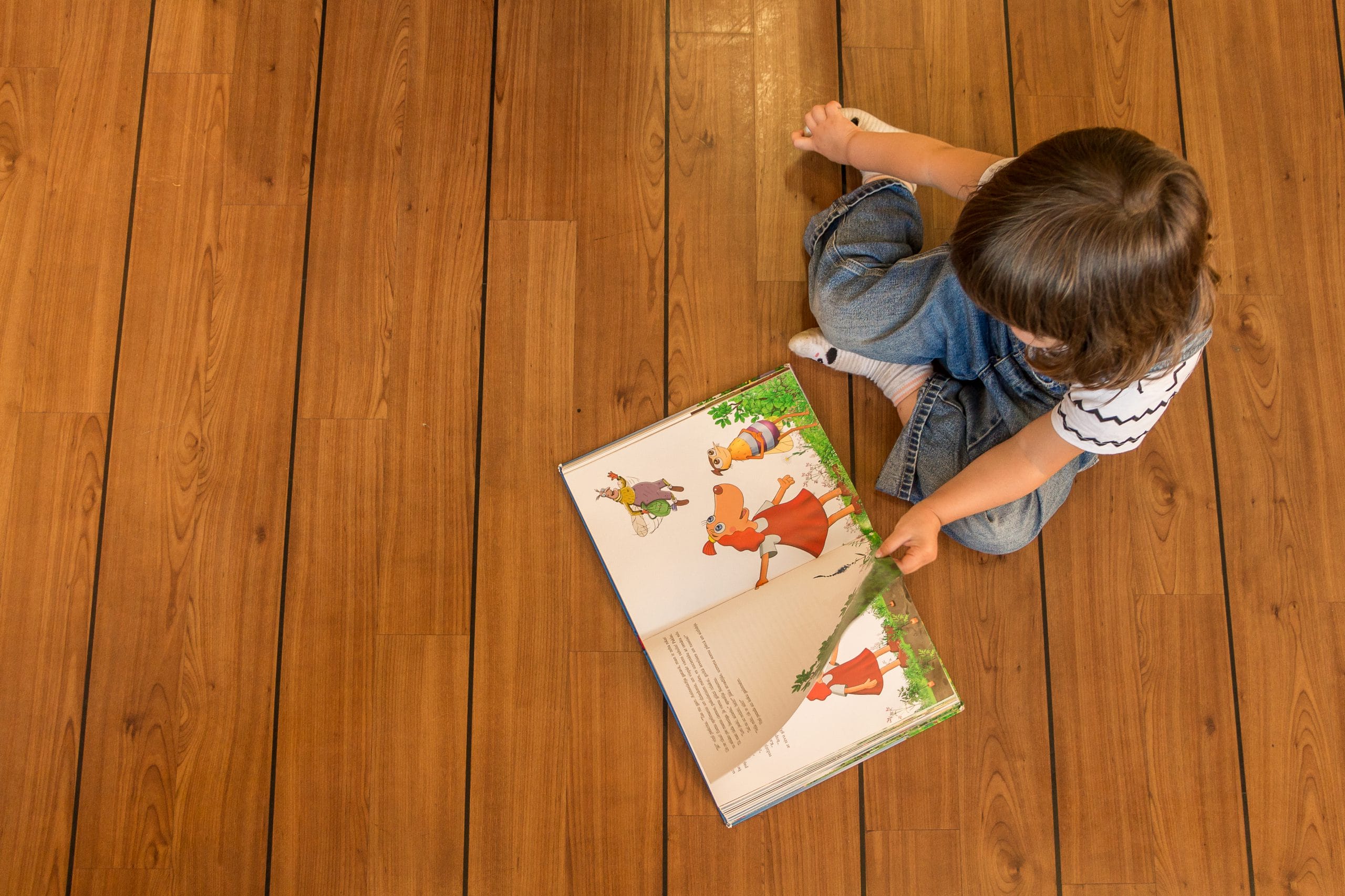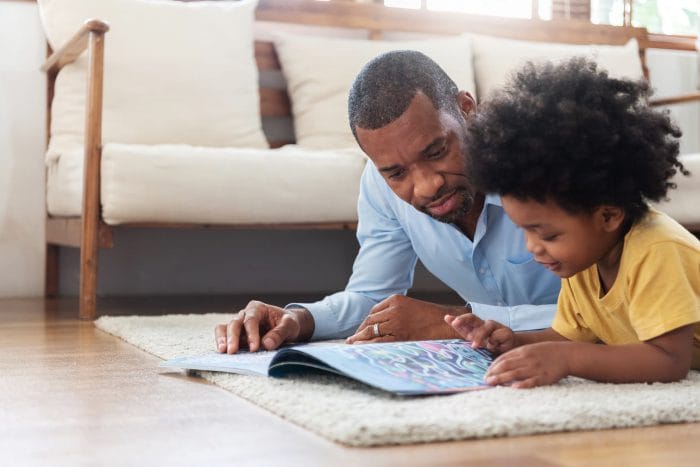When writing a book, the audience’s interests, the development of characters, and the style of writing all play a large part in what the end result looks like. But writing children’s books has its own unique set of requirements, since kids of different stages of development are the target audience.
If you have considered writing children’s books, our guide will help you take your idea from concept to the children’s book printing project stage to publish your story for future generations to read.
Types of Children’s Books
Unlike adult book writing, children’s authors must initially consider what type of book to create. Since children’s ages roughly correspond to their abilities and interests, books for kids are typically categorized in four general ways.
- Picture Books – Made for pre-readers or new readers, picture books usually have large, easily understood pictures as the focus that are accompanied by up to about 500 words at the most. They are typically made for ages 2-8 years of age, but may be read by adults to even younger children before they can participate in the reading process. Storylines are simplistic in picture books when they are included.
- Early Readers – Children who are just beginning to read need early reader books that focus on one central theme throughout. Simple sentence structures, illustrations, and easy-to-understand concepts make these books ideal for children ages 5-9 years old. Books in this category usually contain no more than 1,000 words.
- Chapter Books — Written for ages 7-10, chapter books are the first books to present complex storylines across multiple characters. These books typically are between 10,000 and 12,000 words in length and are broken up into chapters.
- Novels – This category of books is normally written for children aged 11-13 and contains few if any illustrations. These short novels can contain between 20,000 and 25,000 words and may address more mature topics. They usually contain main characters that are near the age of the reader.
Getting Started Writing Children’s Books: Choose Your Audience
Once you have decided on the age category of book you want to create, to get started you have to begin to think about the critical parts of writing children’s books. These include what message you want to deliver with the story, how you plan to convey it, what the structure of the book will look like, how characters will be developed, and if the book will benefit from illustrations.
The Message: What is the Story Saying?
Every story tells the reader something and this is especially true when writing children’s books. Writing children’s books with an underlying message resonate with young readers and provide an interesting, multi-layered experience for them as they read and re-read the book, catching new details and descriptions as they mature.
Outline: Building a Framework When Writing Children’s Books
When writing children’s books, plan out when characters will be introduced, when the major plot elements will occur, and when the resolution to the problem or conflict happens. The main parts of a story to include are:
Introduction: Meet the characters, describe the location and other aspects of the setting (like time or era), and provide background information to lay the groundwork for the conflict.
Conflict: Introduce the problem(s) between the characters and other characters or their situation while making the conflict meaningful for the reader.
Resolution: Solve the character’s conflict(s) while also providing some resolution to the overall story or linking it to a future story.
- Top Tip: Writing children’s books conflict and resolution can be very simplistic while at the same time being effective, engaging, and fun. Picture books may not contain any conflict. Early reader books may include basic conflicts with main characters that are looking for something that is lost or trying to find someone or something. Chapter books can introduce conflicts that are more emotional or stressful for the characters, while novels are much more complex with multiple conflicts and resolutions within the same book for major and sometimes minor characters.
Writing Children’s Books: Character Development
The real meat and potatoes part of writing children’s books is creating fun, entertaining stories that will capture a child’s imagination. A good rule of thumb when writing children’s books is to create characters that are around the same age as the intended reader. Matching at least some characters to the reader’s age will help kids to identify with the characters more easily.
Young children like to read books with other children as the main characters so that they can imagine all kinds of situations and circumstances. Their love of the magical and improbable is very strong, too, so characters that have superhuman strength, are extraordinary in some capacity, or have an unusual characteristic are beloved by young readers.
Children also love to read about characters just like them, living a normal life, who face everyday challenges and problems but find a way to overcome them, too.
The Big Picture: Should You Use Illustrations?
In a word, yes! One of the best ways to engage the youngest of readers is to include plenty of full-color, captivating illustrations. Younger readers are especially interested in illustrated books, so plan on making sure you include great pictures to go along with your concept and story. If you need to hire a professional illustrator, you should provide them with a clear description of how you expect the characters and artistic outcome to look or feel.
While some creative license is expected with a professional artist’s work, your vision of the characters and story should be clear so that the descriptions in the book align with the visual representation of the children’s book writing.
Chapter books, however, typically have very few or no illustrations or drawings outside of the cover art and small chapter drawings or doodles to represent what is happening. For older readers, drawing a detailed description of characters, locations and events in the story is left up to the creative writing, precise word choice, and vivid comparison and contrasts to paint the pictures within the reader’s minds.
Designing the Cover
One of the most important visuals for your book is the cover. Make it interesting and fun so that it catches your reader’s eye so that they will pick it up.
Consider the Audience: Word Choice and Delivery
One of the biggest keys to writing children’s books is to remember your audience. While this may sound obvious, word choice selection is critical to a young reader being able to understand the book. Almost all children also love silly words, sentence construction, and unexpected elements in their books that make them think, question, or consider the world around them.
For chapter books and novels, word choice should continue to match the age range and expected maturity of the potential reader. Complex sentence structures are great to incorporate when writing children’s books for pre-teens as well as using sentences that are intentionally grammatically incorrect since older kids will recognize them for their dramatic effects on the story.
- Top Tip: Use a readability checker to see if you are writing on the children’s reading levels to let you know if your word choices should be adjusted for your intended book audience. While some higher-level words are always good to use, the overall readability should be within the child’s general reading range.
The Final Page: Now What?
Writing children’s books is not as simple as it may initially seem, since books written especially for the youngest of readers have to appeal to a kid’s reading level, interests, and abilities. But once you have a complete draft of your book, there are just a few things to do before publishing.
Editing and Proofing
Carefully review all pages to make sure they say what you intended to say and add in details like page numbers now if you want them in your book. Make sure illustrations are included on the right pages and that everything is in the right order. Then, proof your children’s book for spelling and typographical errors. Don’t let all of your hard work be spoiled by a small error that could have been caught during the proofing process.
ISBN
All books are identified uniquely by their ISBN number, while the bar code makes the book’s ISBN readily available. Be sure to purchase the ISBN number prior to publication and consider getting the bar code as well to place on the back cover of your book.
Publishing Your Children’s Book
Congratulations! Now that you have finished writing your children’s book, it is time to order some books so children of all ages can enjoy the story for years to come.






